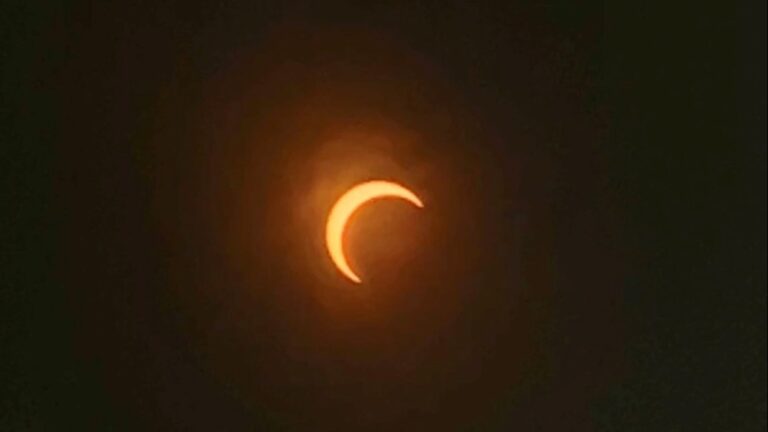The solar eclipse is scheduled to pass over DFW's skies Saturday morning.
DALLAS — A “Ring of Fire” annular solar eclipse swept across the United States and other parts of the world Saturday morning.
An annular solar eclipse is when the moon passes between the Earth and the sun, at or near its farthest orbital point from Earth.
It happened on Saturday, October 14th, and Texas was also in its path. His 100% coverage passes throughout Texas included Midland-Odessa, San Antonio, and Corpus Christi.
Viewing range in the DFW area was 80% to 85%.
Watch the “Ring of Fire” annular solar eclipse in Texas here:
Where can I see the solar eclipse in DFW?
Here's a list of watch parties happening across the metropolis:
- Curry Hall Lawn – 200 Avenue A, Denton, Texas, 7601, UNT Physics Student Association and
- Dallas Arboretum Solar Eclipse Event – 8525 Garland Rd., Dallas, Texas, 75218
- Perot Museum of Natural Science – 2201 N. Field Street, Dallas, Texas, 75201
- Reyfes Urban Astronomy Center – 2350 Tom Cole Rd., Ponder, Texas, 76259 UNT with Department of Physics
- University of Texas at Arlington Planetarium – 701 S. Nedderman Drive, Arlington, Texas, 76019
Photo: North Texas residents observe the 'Ring of Fire' annular solar eclipse.
What is the “Ring of Fire” annular solar eclipse?
During the “Ring of Fire” annular solar eclipse, the Moon is in its furthest orbit from Earth. Because it's farther away than during a total solar eclipse, it won't cover the entire sun, and anyone in its path will see what looks like a solar ring. That's where the “Ring of Fire” solar eclipse gets its name.
Best spot to see the annular solar eclipse “Ring of Fire”
If you're planning a road trip, Space.com lists New Braunfels as one of the top seven tourist attractions in the Southwest United States. The website specifically mentions the cluster of superstores on Interstate 35 and Highway 46.
Other locations and times on the eclipse's path across Texas are:
- Midland: From 10:18 a.m. to 1:21 p.m., maximum solar eclipse begins at 11:43 a.m.
- San Angelo: From 10:20 a.m. to 1:25 p.m., maximum solar eclipse begins at 11:47 a.m.
- Kerrville: From 10:22 a.m. to 1:30 p.m., maximum solar eclipse begins at 11:50 a.m.
- San Antonio: From 10:23 a.m. to 1:32 p.m., maximum solar eclipse begins at 11:52 a.m.
- Corpus Christi: From 10:26 a.m. to 1:38 p.m., maximum solar eclipse begins at 11:55 a.m.
If you don't want to go out and watch an annular solar eclipse, NASA is streaming the annular solar eclipse. You can access the live stream here. The live stream begins October 14th at 10:30 AM Central Time and continues until 12:15 PM Central Time.
How to protect your eyes during a solar eclipse
It is not safe to view a solar eclipse directly. Doing so can cause immediate eye damage. This also applies to cameras, telescopes, and binoculars that do not have a dedicated solar filter.
Regular sunglasses won't protect you either. Special social viewing glasses or secure handheld viewers should be used. Also, make sure the lens is not damaged or scratched.
If you don't have special eclipse glasses, you can use indirect viewing methods such as a pinhole projector, which has a small aperture that can project an image of the sun onto the surface.
Guidance from NASA on safe solar eclipse viewing.
When is the next solar eclipse?
A total solar eclipse will occur on April 8, 2024 and will span multiple states, including Texas. In fact, in Texas, the path of April's solar eclipse intersects with the path of this year's October solar eclipse.

